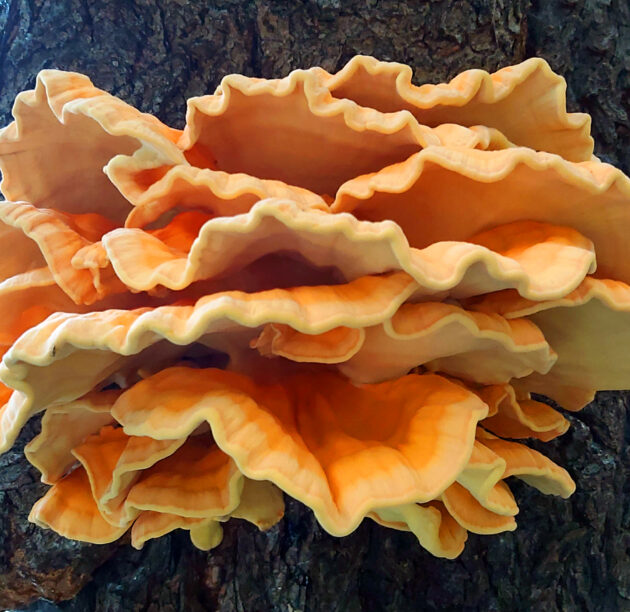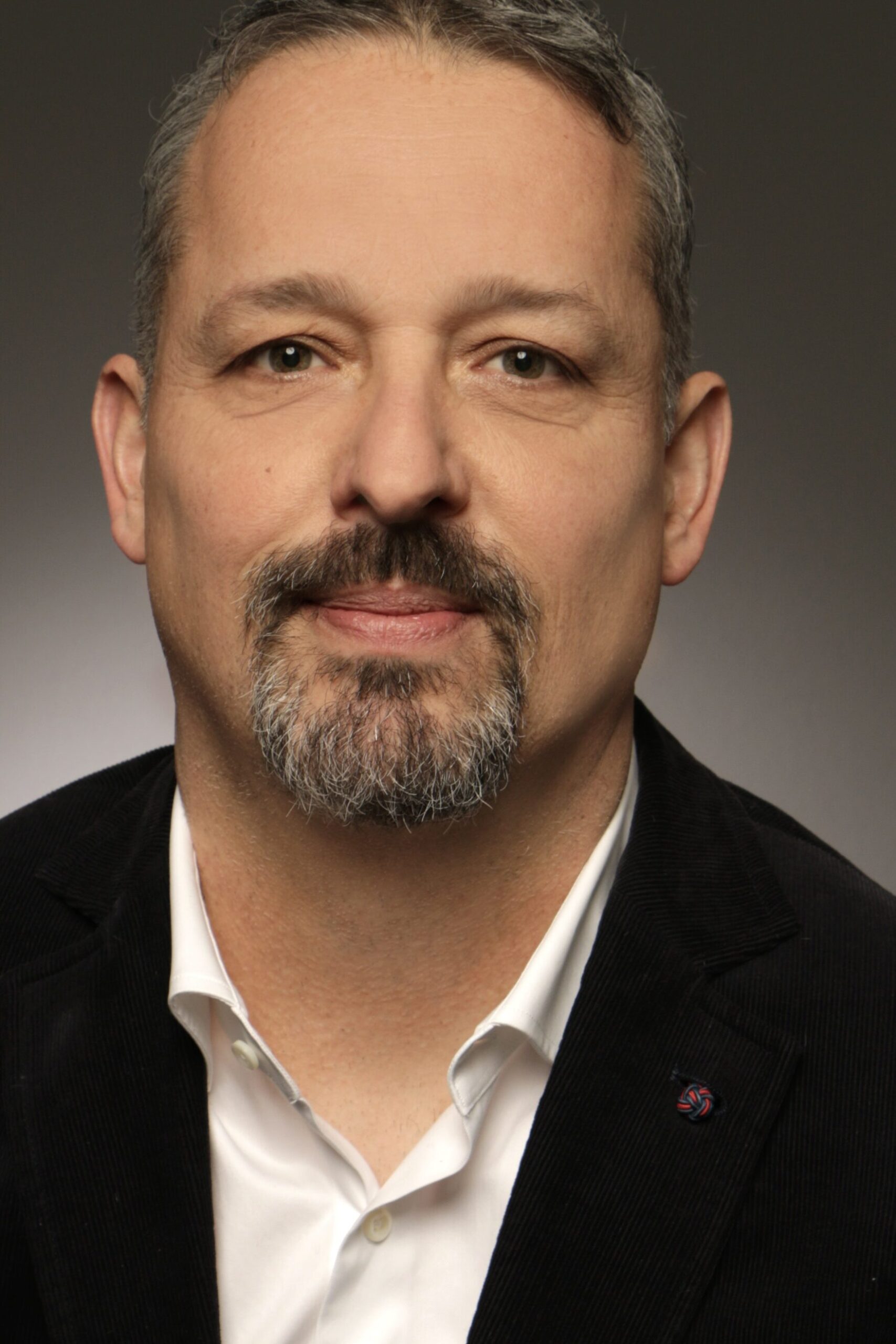Meet the researcher: the unexplored potential of mushroom foragers’ favourites with Dr Christoph Schwarz
Bringing chicken out of the woods and onto the dinner table – a commonly eaten mushroom popular with foragers is at the heart of a project to develop a sustainable and innovative new food ingredient.
Dieser Artikel ist hier auch auf Deutsch verfügbar.
23 April 2025


Name: Christoph Schwarz
Job title: Head of Research & Development
Organisation: S2B GmbH & Co. KG, Germany
Alternative protein specialism: Biomass fermentation
A commonly eaten mushroom popular with foragers is at the heart of a project to develop a sustainable and innovative new food ingredient.
Dr Christoph Schwarz is leading a team at Germany’s S2B research company exploring the potential of the chicken of the woods fungi – a group of edible mushrooms so-called because they have a taste and texture similar to that of conventional chicken meat.
However, rather than these ‘fruiting bodies’ the researchers are analysing the unexplored potential of the fungi’s rapidly growing root structure – or mycelium.
As part of a project funded by the Good Food Institute, they are using a process known as biomass fermentation – similar to beer or yoghurt production – to grow this mycelium and develop it as a source of sustainable food.
While there are thought to be as many as three million species of fungi in existence, by working with a strain that is already well-known to be safe and tasty to eat, the team is following a similar approach to Danish researchers who worked with chefs from a Michelin-starred restaurant to develop a fermented product using the oyster mushroom.
Promising candidate for food innovation
Christoph says there are several factors that make the chicken of the woods a promising candidate.
As well as already being known for its flavour, the fungus produces high levels of carmine red colourants that could make it an attractive ingredient in various food products, while studies have indicated it may have health benefits.
“This combination is very interesting,” Christoph said. “We’re not just focused on the protein alone but the entire fungal biomass as an ingredient for the food industry.”
To better understand this strain’s potential, the team is sequencing the fungi’s genome to investigate its properties further and plan to analyse aroma profiles, texture, and other sensory attributes more thoroughly.
Christoph plans to develop a product with a similar texture to meat and is building up contacts in Germany’s food industry which he believes are crucial to providing the scale-up potential a project like this needs.
“As a scientist, you think you have a good idea but it’s still very far from what the industry needs,” he said. “You need to make these connections early to realise what the food industry needs.
“It’s definitely a big chance because there’s so much interest in this topic we think it should be easy to get partners to join.”
Using byproducts from the food industry
The team is also exploring ways of using byproducts as a feed source on which the fungi can grow – based on the understanding that as it grows naturally on trees or dead wood, it will be capable of using a wide range of materials as a substrate.
Supported by a supplier to the animal feed industry and a small brewery in Bremen, Christoph successfully applied hydrolysates derived from brewer’s spent grains, a side product of the brewing industry. However, the team is more confident about using potato peels based on the projected costs of the pretreatment process.
A key component of the research is submerged fermentation – in which microorganisms are grown in a liquid medium containing all the necessary nutrients required for their growth and metabolism. Together with the Munich Institution of Applied Sciences, the team is exploring this process, which allows for the controlled growth of fungi and offers scalability and consistency.
Additionally, they found that manipulating pH levels in the fermentation tank can significantly influence growth rates.
Microbiology expertise
Christoph brings a lengthy background of microbiology expertise to the project. After studying at Austria’s University of Innsbruck, he completed a PhD at the Max Planck Institute for Biochemistry – looking into how microbes responsible for giving salt lakes their striking red and purple colours are able to protect themselves from toxic substances like arsenic.
Following a period in the United States, working on cyanobacteria at Arizona State University, he returned to Germany, working at Darmstadt Technical University where he met S2B’s managing director Rudolf Cordes, who persuaded him to join the small R&D company.
The project is being funded by the GFI Research Grants Program, which is currently open to new applicants and is made possible with the support of our incredible family of donors. The scheme seeks to unlock research bottlenecks and deliver open-access research that can support the ecosystem in delivering a more secure, sustainable and just food system.
Although neither Christoph nor S2B had any previous experience in working on alternative proteins, the inspiration to begin exploring fungi came from Rudolf, who had become fascinated with growing mushrooms and wanted to understand more.
Christoph now says that the GFI research grant programme has given them the chance to enter this new field, and the team is now applying for other sources of funding to explore it further.
“Fungal biotechnology has big potential,” he said, adding that although a lot of academic work was taking place in this field, there was a lack of pilot plants enabling them to scale up. However, success will depend on continued collaboration to ensure that these innovations meet the practical needs of the market.
Are you interested in getting involved in the science of plant-based food, cultivated meat and fermentation? Take a look at our resources or check out our science page.
If you’re a researcher:
- To find funding opportunities, check out our research funding database for grants from across the sector, and our research grants for funding available from GFI.
- Explore our Advancing Solutions initiative, which highlights key alternative protein knowledge gaps.
- Subscribe to the alternative protein researcher directory to find potential collaborators or supervisors in the field.
- Look out for monthly science seminars run through our GFIdeas community.
If you’re a student:
- Find educational courses around the globe through our database.
- Sign up for our free online course introducing the science of sustainable proteins, explore our resource guide explaining what is available to students or newcomers to the space, and check out our careers board for the latest job opportunities in this emerging field.